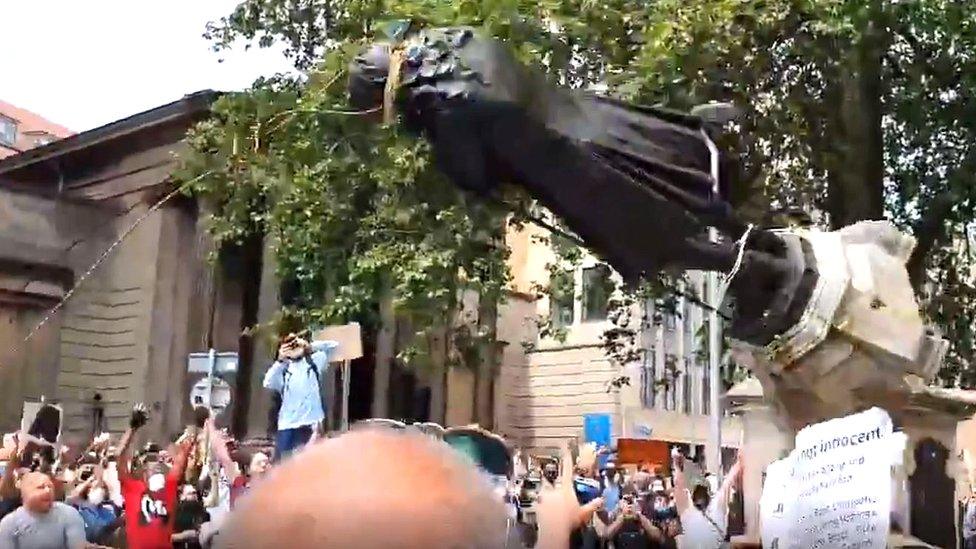Jen Reid: Black Lives Matter statue to go from Colston plinth
- Published
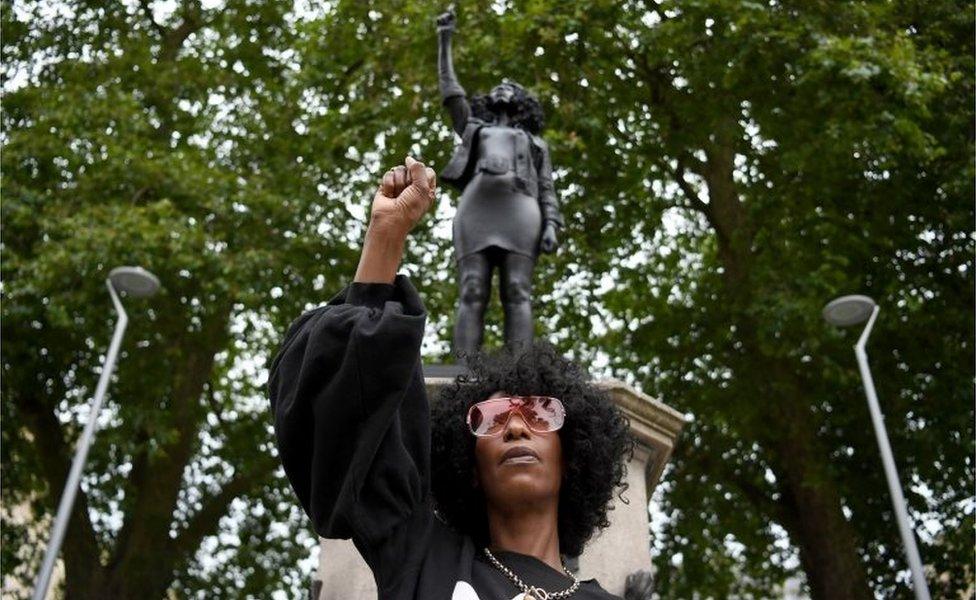
Jen Reid posed with her statue, which appeared on the empty plinth on Wednesday
A sculpture of a Black Lives Matter protester, placed on the plinth where a slave trader's statue was toppled, will be removed, Bristol's mayor has said.
The sculpture of Jen Reid was erected early on Wednesday at the spot in the city where an Edward Colston statue was pulled down during protests last month.
Ms Reid had been photographed standing on the empty plinth.
Mayor Marvin Rees said it was up to the people of Bristol to decide what would replace the Colston statue.
Artist Marc Quinn said his black resin statue, called A Surge of Power, was meant to be a temporary installation to continue the conversation about racism.
He said he was inspired to create it after seeing an image of Ms Reid standing on the plinth with her fist raised during the Black Lives Matter protest on 7 June.
Mr Quinn then contacted Ms Reid through social media and they worked together on the statue, which was erected shortly before 04:30 BST.
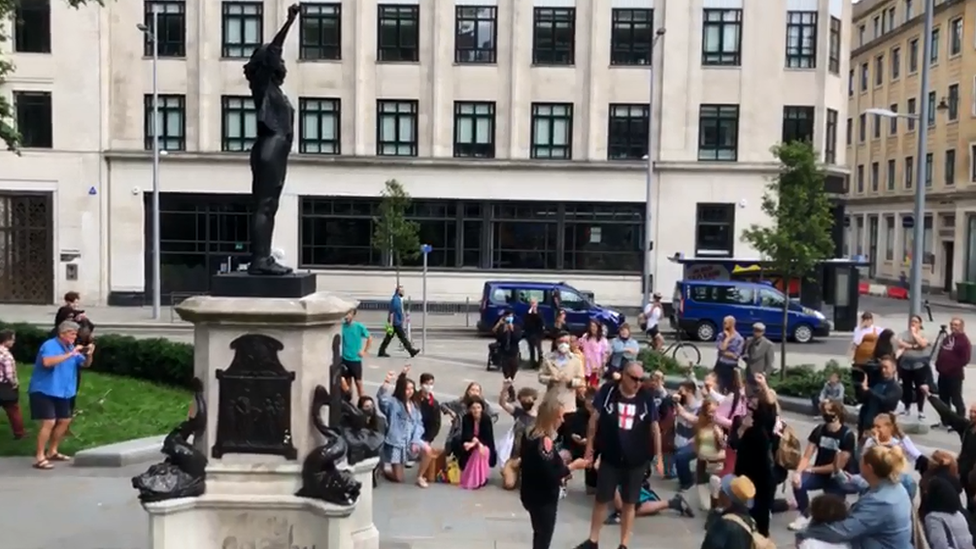
The new statue has has attracted people both supporting it and those against
BBC producer Alex Littlewood said people had been gathering around the Jen Reid statue for most of Wednesday, with many coming to take a knee.
"Most people have been supportive of the statue, but for a short time this afternoon a small amount of people arrived calling for the statue to be removed, saying it was an act of vandalism," he added.
Mr Rees, the city's elected mayor, said removing the new statue was "critical to building a city that is home to those who are elated at the [Colston] statue being pulled down, those who sympathise with its removal... and those who feel that in its removal, they've lost a piece of the Bristol they know".
He added the sculpture was the work and decision of a London-based artist, "was not requested and permission was not given for it to be installed".
Allow X content?
This article contains content provided by X. We ask for your permission before anything is loaded, as they may be using cookies and other technologies. You may want to read X’s cookie policy, external and privacy policy, external before accepting. To view this content choose ‘accept and continue’.
Councillor Cleo Lake said while she welcomed the arrival of the statue, she agreed the long term future of the plinth should be decided by the people of Bristol.
She said: "I expect the statue will be a temporary intervention and it is great to hear that should the statue be sold then the money raised will in part go towards the Cargo education project set to be rolled out in Bristol secondary schools this September."
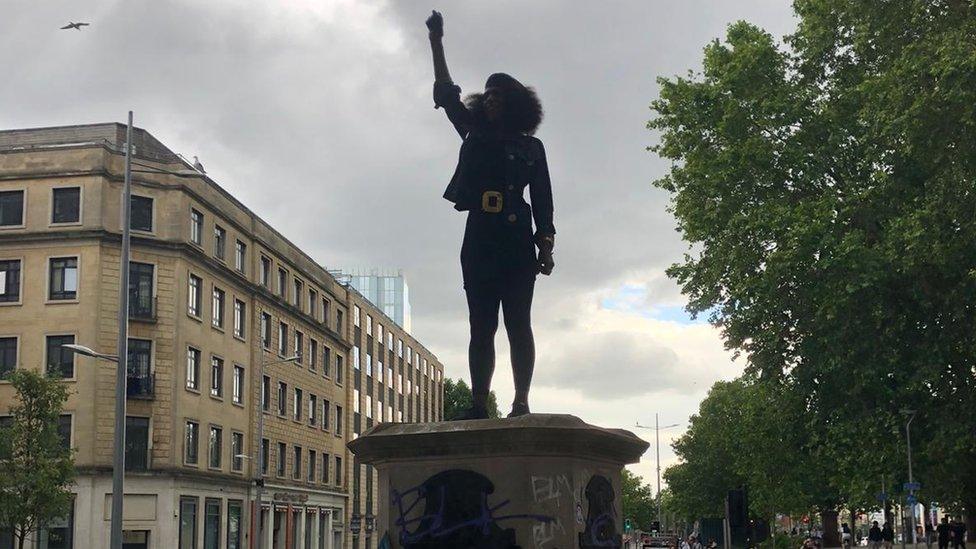
Jen Reid was pictured standing on top of the plinth after the Colston statue was pulled down on 7 June
Ms Reid said: "I think it's something the people of Bristol really appreciate seeing.
"My husband took the photo on the day of the protests and put it on his social media. He was contacted by Marc Quinn who then contacted myself.
"I was in his studio by the Friday after the protest with 201 cameras surrounding me, taking pictures of me from every conceivable angle. That went into a 3D print and a mould was made."
Ms Reid said the sculpture was important because it helped "keep the journey towards racial justice and equality moving".
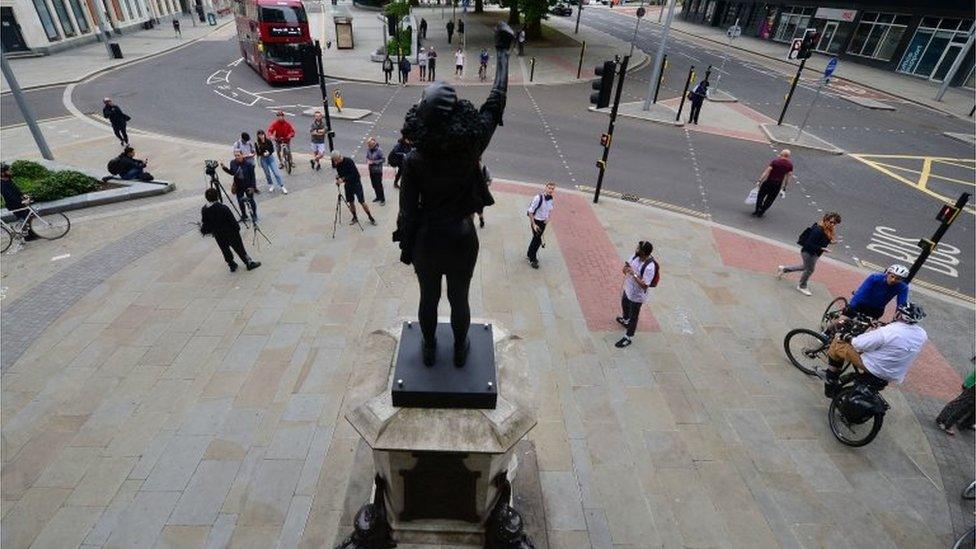
People in Bristol stopped to take photos of the new statue
She said she had felt an "overwhelming impulse" to climb on to the plinth during last month's protest.
"When I was stood there on the plinth, and raised my arm in a Black Power salute, it was totally spontaneous," she said.
"I didn't even think about it. It was like an electrical charge of power was running through me.
"This sculpture is about making a stand for my mother, for my daughter, for black people like me."
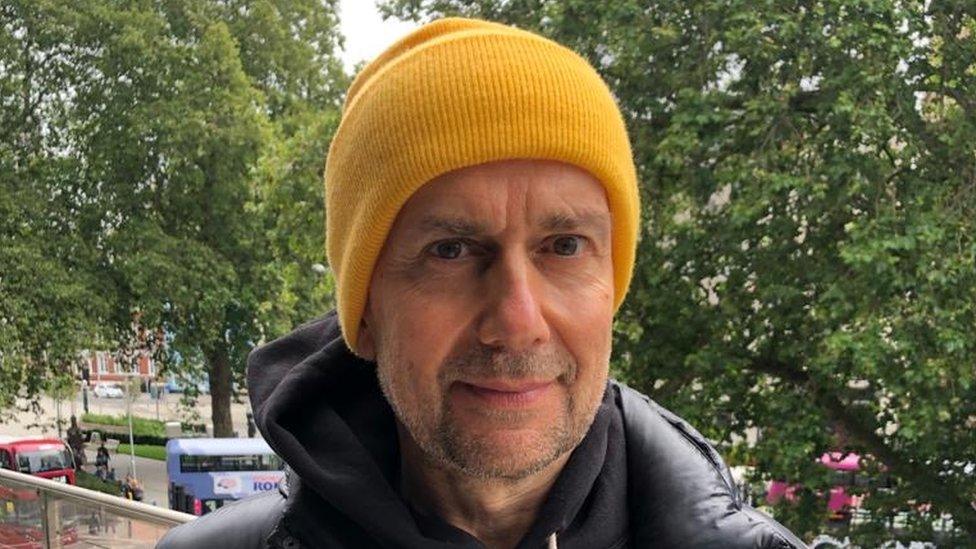
Artist Marc Quinn's previous works include a sculpture entitled Alison Lapper Pregnant, which was put on the fourth plinth in Trafalgar Square
Mr Quinn said: "I saw pictures of Jen on the plinth and she spontaneously made this gesture and I thought 'this is amazing'.
"She's made an extraordinary artwork just by doing that and it needs to be crystallised into an object and put back on to the plinth.
"It had to be in that public realm and I wanted to put it in that charged spot where Edward Colston had been before."
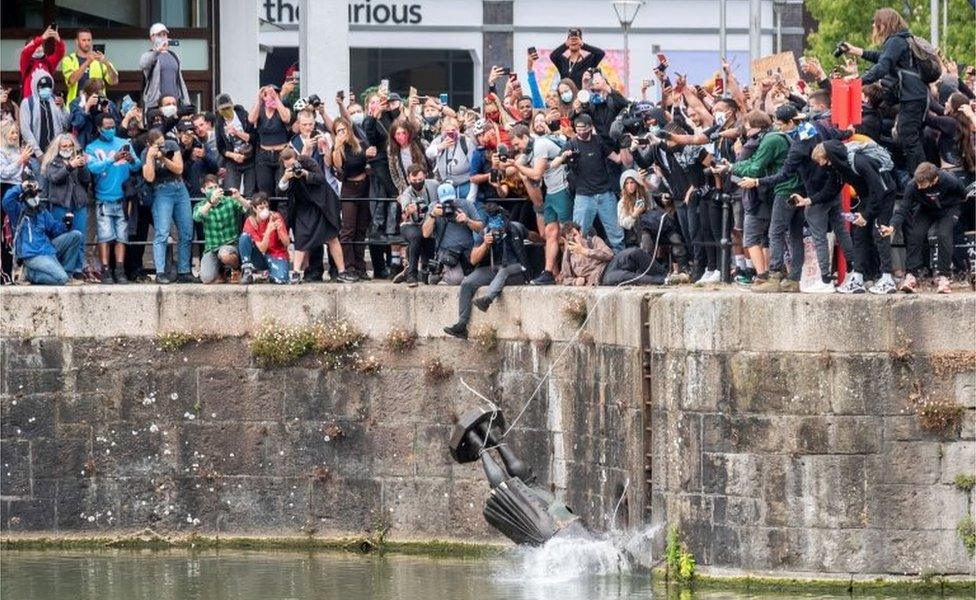
The statue of Edward Colston was pulled from its plinth last month and dragged into the harbourside
On 7 June, protesters used ropes to pull down the Colston statue, which had been at the Bristol city centre site since 1895.
It was then dragged to the harbourside where it was thrown into the water at Pero's Bridge - named in honour of enslaved man Pero Jones who lived and died in the city.
Bristol City Council later retrieved the statue, which will be displayed in a museum along with placards from the Black Lives Matter protest.
- Published15 July 2020
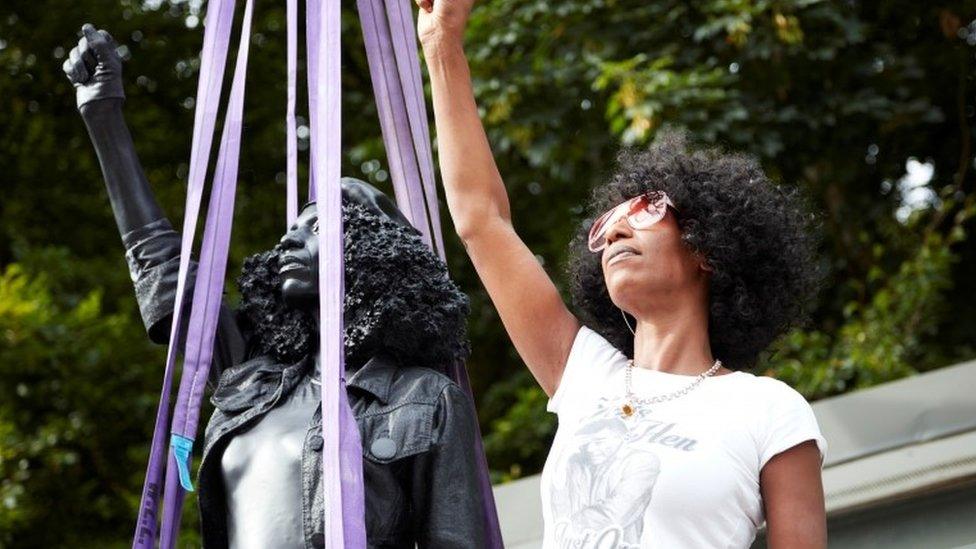
- Published2 July 2020
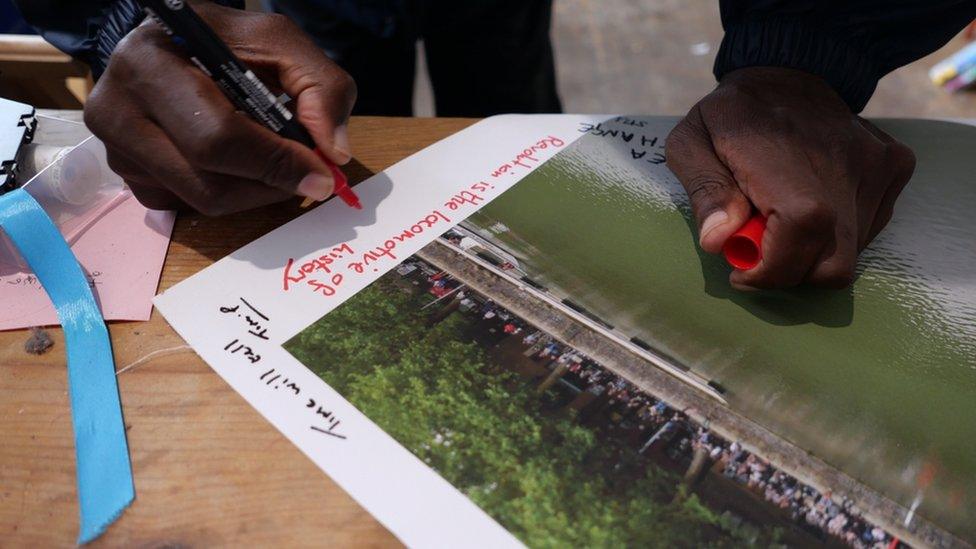
- Published19 June 2020
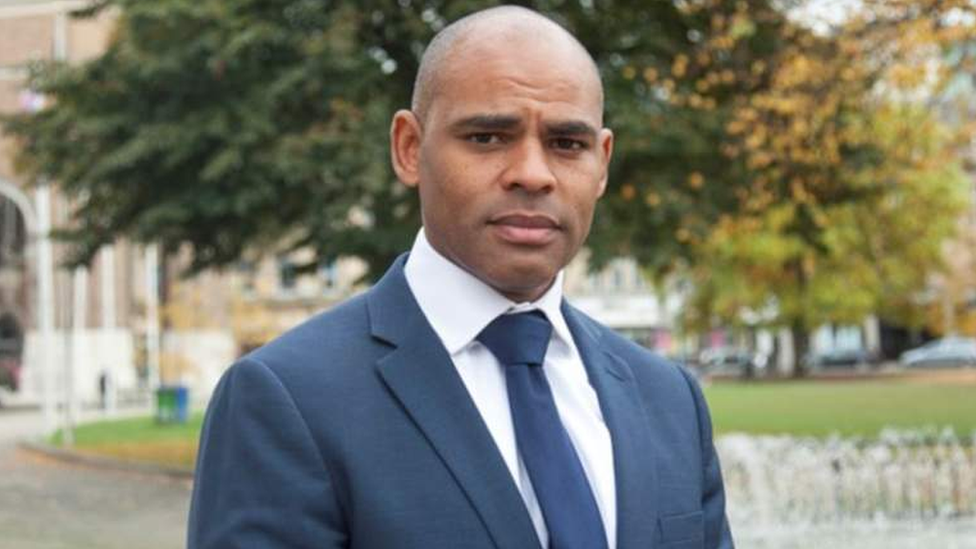
- Published17 June 2020
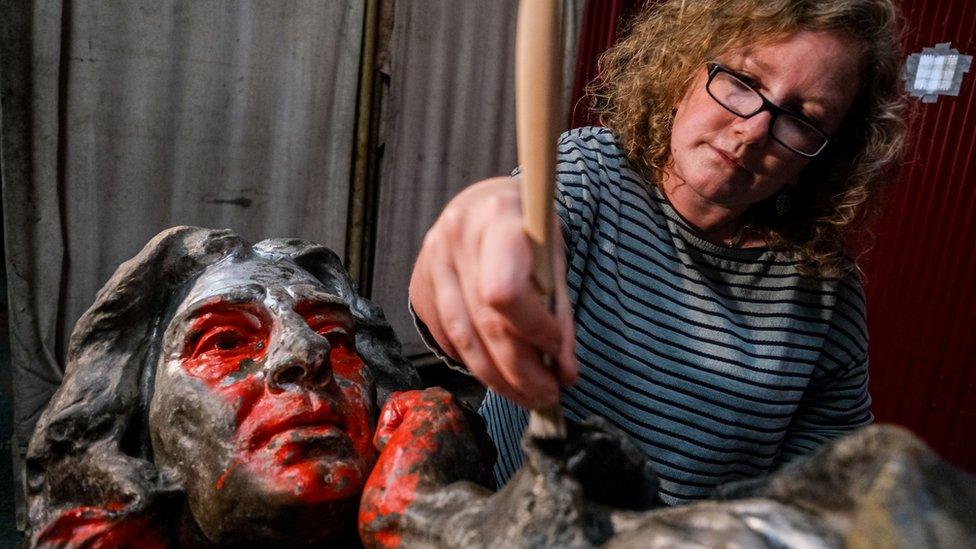
- Published15 June 2020
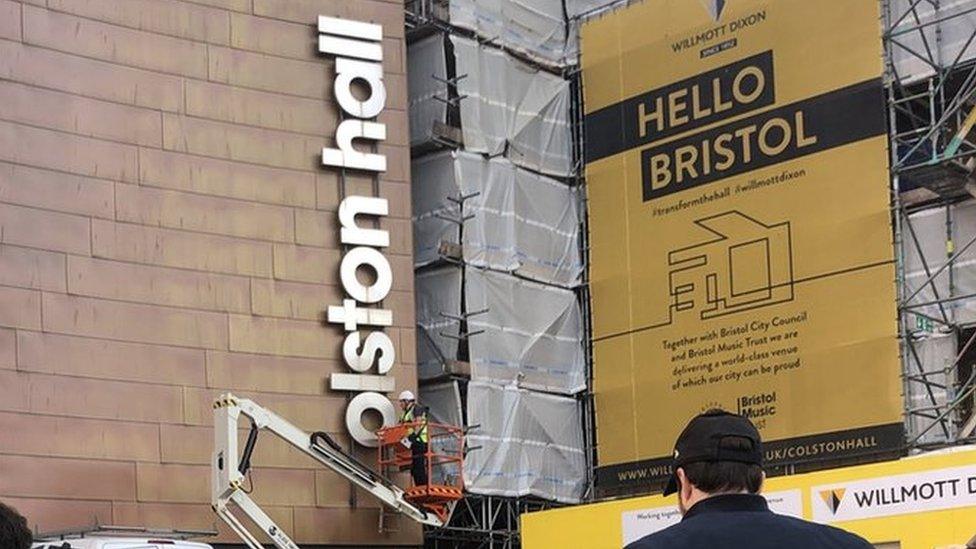
- Published11 June 2020
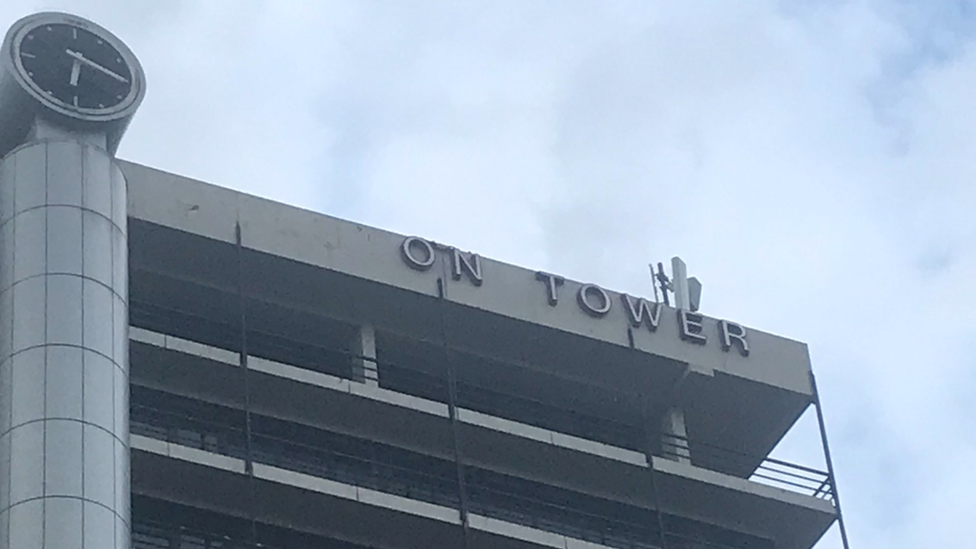
- Published8 June 2020
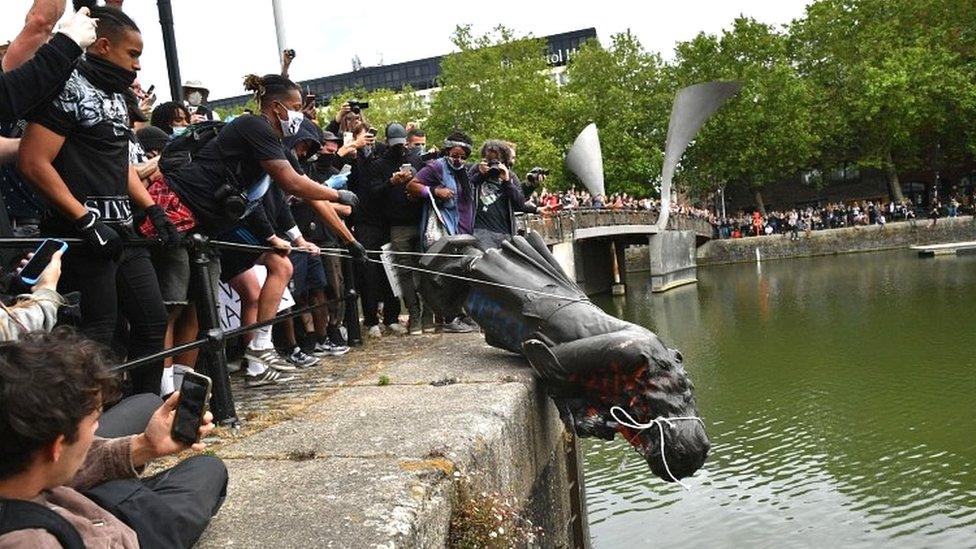
- Published8 June 2020
